In early 1951, a woman named Henrietta Lacks visited the “colored ward” at Johns Hopkins hospital for a painful lump she found on her cervix. She was seen by Dr. Howard W. Jones, who indeed found a tumor growing on the surface of her cervix. He took a tissue sample, which confirmed Henrietta’s worst fears: She had cancer.
The treatment at the time was to irradiate the tumor with radium tubes placed in and around the cervix. The hope was that this would kill the cancerous cells while preserving the healthy tissue. Unbeknownst to Henrietta, a biopsy was taken during her radium procedure. Slivers of her tumor and of healthy cervix cells were cut away. The cancer cells were used as part of a research project. Then something amazing happened: the cancerous cells grew and continued to grow outside of her body.
As Henrietta herself lay dying, the HeLa immortal cell line was born. This cell line has been used in nearly every aspect of medical research since the polio vaccine. Millions owe their lives to it. Yet, Henrietta and her family never gave consent for any of this. Her family was not informed or compensated. In fact, until recently, they didn’t fully grasp exactly how Henrietta’s cells were being used.
The Life of Henrietta Lacks
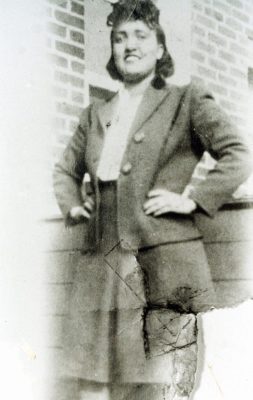 Loretta Pleasant was born on August 1, 1920, in Roanoke, Virginia. At some point, her name changed from Loretta to Henrietta, but the how and why is lost to family lore. After her mother died, she and her siblings were split up among other family members. Henrietta went to live with her grandfather and her cousin David in Clover, Virginia. Henrietta grew up working the same tobacco farms her ancestors had worked as slaves. She and David had their first child in 1935 and married a few years later. The couple moved to Turner Station, Maryland so David could work for the booming Bethlehem Steel company in Sparrows Crossing.
Loretta Pleasant was born on August 1, 1920, in Roanoke, Virginia. At some point, her name changed from Loretta to Henrietta, but the how and why is lost to family lore. After her mother died, she and her siblings were split up among other family members. Henrietta went to live with her grandfather and her cousin David in Clover, Virginia. Henrietta grew up working the same tobacco farms her ancestors had worked as slaves. She and David had their first child in 1935 and married a few years later. The couple moved to Turner Station, Maryland so David could work for the booming Bethlehem Steel company in Sparrows Crossing.
Henrietta had five children in total: Lawrence, Elsie, Deborah, David Jr, and Joseph. The family was poor, and for African Americans living in the Jim Crow era, life was hard. But Henrietta made sure they never wanted for anything. Sunday dinner was a special meal in the Lacks home. Henrietta always cooked a large meal and made bread pudding with the leftover bread she had baked that week. Cousins and newcomers to the neighborhood always had a place to stay in the Lacks home while they got on their feet.

Before the birth of her youngest son Joseph, Henrietta told a cousin that she had a knot in her womb. That knot would eventually be diagnosed as the cancer which would kill her. She didn’t die peacefully. Her cancer was incredibly aggressive, and cancer treatments at the time were nowhere near what we are accustomed to today. By August 1951 the tumors had spread throughout her abdomen. The continued radiation treatments burned her inside and out, while she suffered indescribable pain.
By August 1951 she was admitted to the hospital and on October 4th, she passed away. David gave permission for an autopsy to be performed, and tumors which were white in color were found throughout her abdomen. They covered her internal organs like strings of pearls. Her bladder and kidneys had been almost completely replaced with cancerous tissue. Henrietta was laid to rest in Clover, in an unmarked grave near her mother. She was only 31 years old.
George Gey’s Pursuit of Immortal Cell Lines
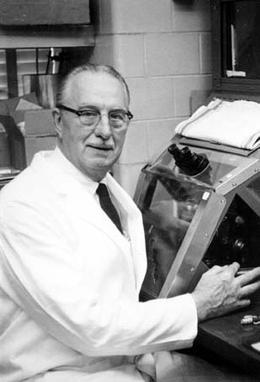 George Otto Gey was a cell biologist working at Johns Hopkins Medical Center. Gey could be thought of as an early modern biohacker. His lab was stocked with equipment he built himself from junkyard parts. Even the sinks were Gey’s own creation, handmade from stones he obtained from a local quarry. His lab was managed by his wife, Margaret — originally a surgical nurse. While George was a kid at heart, Margaret kept the lab running smoothly.
George Otto Gey was a cell biologist working at Johns Hopkins Medical Center. Gey could be thought of as an early modern biohacker. His lab was stocked with equipment he built himself from junkyard parts. Even the sinks were Gey’s own creation, handmade from stones he obtained from a local quarry. His lab was managed by his wife, Margaret — originally a surgical nurse. While George was a kid at heart, Margaret kept the lab running smoothly.
The two had spent years searching for a human immortal cell line — cells which could be reproduced infinitely. If a cell line like this could be found it would become a standard in medical research. Immortal lines had been created from animal cells, but never human.
The operating theory at the time was that cells in culture should be able to live — and multiply forever. In practice though, cell and tissue samples would always die. Teams around the world were attempting to figure out how to culture cells and keep them alive. Gey worked with witches brews of culture medium including chicken plasma, human umbilical cord blood, and other ingredients. George also built numerous tools to support cell growth, including the roller drum system. George would take any cells he could get his hands on, especially cancer cells. It’s not surprising then that a sample of Henrietta’s cells was sent to his lab.
Henrietta’s cancer cells did something no other human cells had ever done: They grew, and kept growing. Cell lines at the time were named with the first two letters of the patient’s first and last names. Henrietta Lacks was shortened to HeLa — the world’s first immortal human cell line.
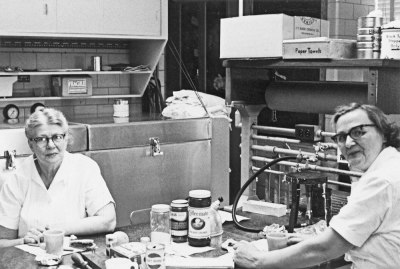
Gey had achieved his immediate goal of discovering a cell line, but it currently existed only in his lab. It couldn’t help researchers around the world if they didn’t have access to it. The problem was shipping cells. They had to travel via air freight, and even then they could die. Gey came up with a new medium and method of shipping frozen cells on ice. This allowed the cells to be shipped by regular mail. When received, the cells could be thawed and grown in an incubator.
The HeLa line was immediately put to use. Jonas Salk found that the cells were perfect for testing his polio vaccine. The first ever cell factory was created at Tuskegee University to keep Salk and other researchers supplied with cells. Eventually, commercial entities were formed to produce and sell the cell lines. Over subsequent years, millions of dollars were made by these companies while the Lacks family lived in poverty.
George Gey didn’t look for credit or payment for creating HeLa. While use of the line was becoming more widespread he was already off looking at new cell lines to culture. It took almost a year of pressure from Margaret and his team before he wrote a simple abstract about the discovery.
Gey himself died of Pancreatic cancer in 1970. Even as he was dying, he submitted himself for research studies, and tried to get his medical team to culture his own cancerous cells, hoping that his own cancer might form a new cell line.
Use and Misuse of the HeLa Immortal Cell Line
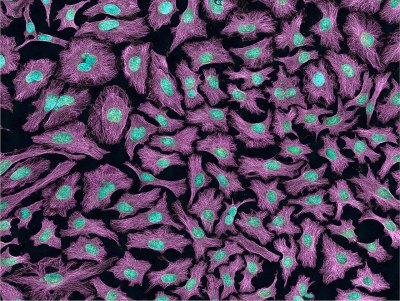
The HeLa cell line in cellular biology is as common a tool as a wrench is to a mechanic. In her 2009 book The Immortal Life of Henrietta Lacks, Rebecca Skloot found that over 60,000 scientific articles referenced HeLa, increasing at a rate of 300 each month. HeLa was used to create the polio vaccine, and in chemotherapy research. HeLa was key to mapping the human genome. In fact, it was a HeLa cell which was used to determine that humans have 46 chromosomes. HeLa cells went to space in both American and Russian satellites, and they accompanied Yuri Gagarin on his historic flight. The cells traveled to the moon with the Apollo missions, and were subjected to atomic bomb blasts to test the reaction of human cells.
There were some morally reprehensible uses of HeLa cells as well. Sloan Kettering immunologist Chester Southam wanted to see if the cells could infect other humans. He started with patients who already had cancer, injecting HeLa cells in their arms. The cells grew into tumors. The tumors were removed, but in several cases, they grew back. In one case Henrietta’s cancer metastasized to the patient’s lymph nodes. The same experiment was tried with volunteers from an Ohio prison. Once again, tumors grew in the prisoner’s arms. In this case, though, the prisoner’s healthy immune systems eventually fought off and rejected the HeLa cells.
By the end of his research, Southam had injected over 600 people with HeLa. Many of these people were gynecological surgery patients at hospitals where he worked. The patients had never given consent to be injected. For this, he was eventually brought up on charges of fraud, deceit, and unprofessional conduct. In 1963, The Regents of the University of the State of New York found him guilty, and he was placed on medical probation for one year.
Cross Contamination Risks During Cell Study
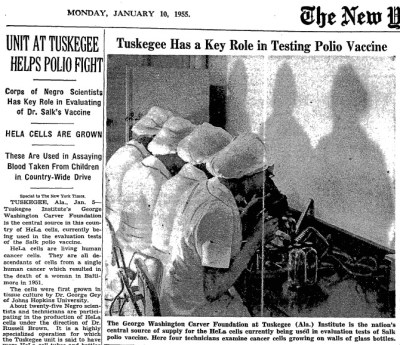
While the HeLa cell line has been incredibly beneficial for research, it needs to be handled carefully. HeLa multiplies so quickly that it will quickly destroy any other cell line it comes in contact with. Cross contamination has been and still is a huge problem. HeLa cells can travel on dust particles, through poorly cleaned lab tools, and on researchers’ gloves. Many millions of dollars of research have been lost due to the fact that the researchers were working on the wrong type of cells. The cells they intended to work on had been taken over by HeLa.
The contamination issue was first discovered by Stanley Gartler in 1967. Gartler found that many of the varied cell lines he was ordering from biological suppliers were testing positive for a specific genetic marker which is typically only found in HeLa. He presented his results and was widely criticized, as it would mean years of research was worthless. Scientists weren’t ready to throw away all that work.
In order to search for more genetic markers to identify HeLa cells, scientists went back to the source — Henrietta’s family. In the early 1970’s, the Lacks family was contacted and blood samples were taken. Henrietta’s children were never fully informed exactly what the blood was being used for. They thought they were being tested for the cancer which killed their mother.
Several more genetic markers for HeLa were derived from these tests. While it is now much easier to detect HeLa contamination, the contamination itself is still a problem. Even with modern filtration and sterilization techniques, HeLa cells can be found contaminating unrelated samples.
The Secret to HeLa’s Immortality
Henrietta’s cancer cells divide faster and were more hardy than any other human cells ever studied. What made them special though? First would be the cause of the cancer itself — Henrietta had HPV-18, a particularly nasty form of the Human Papillomavirus which is now known to cause cancer. She also had syphilis. This has been attributed to David Lacks’ infidelity.
Viruses inject parts of their genetic material into that of healthy cells. In Henrietta’s case, HPV-18 DNA was inserted into multiple sites of her cells’ DNA. HeLa cells can have anywhere from 76 to 80 chromosomes. Normal human cells have 23 pairs of chromosomes for a total of 46. These changes impacted many of the hard-coded genetic “programs” that the cells use to operate. For example, tumor suppression may have been turned off while cell growth rate was increased. Most importantly, one of these changes affected the mechanics of HeLa cell division.
The key to HeLa’s immortality is in the way cells divide. At the end of each chromosome is a repeating section of DNA called telomeres. As a normal cell divides, the number of telomeres gets smaller and smaller until it reaches a pre-set limit, called the Hayflick limit. At this point, a cell will no longer divide. When HeLa cells divide, they create an enzyme called telomerase. This enzyme prevents the telomeres from being reduced and allows the cell to divide an unlimited number of times. Telomeres are not completely understood — they also play a part in the aging of the overall organism. In humans, there are around 40,000 base pairs at birth, and only 11,000 base pairs in old age.
Moral Questions

While the HeLa cell line has been incredibly helpful for the human race, there are moral questions about how the cells were first obtained, and how they have been used. Henrietta Lacks never signed a form saying she allowed her cells to be used for research. Her family was never fully informed of the work done with Henrietta’s cells, or their own blood. Much of the Lacks’ family anger has been directed at Johns Hopkins and George Gey himself. However, neither Hopkins nor Gey ever made money from the cell line.
Through the years many companies have cultured and sold the HeLa cell line. None have compensated the Lacks family, who struggled to pay their own medical bills. The situation improved somewhat in 2009, with the publication of Rebecca Skloot’s book and the subsequent HBO movie. However, the Lacks still have to fight for their rights. In 2013, the entire genome of the HeLa line was sequenced and published without the family’s knowledge. The family did get involved and were able to come to an agreement with the research community to keep a single limited access database of the genome used for research only.
In America, laws have changed over the years and informed consent is now enforced. HIPAA laws protect a patient’s privacy. Yet the procedure performed on Henrietta would still be legal. When a piece of your body is cut away during a medical procedure, it is considered the property of the doctor and medical institution. This means medical professionals can do what they want with it, including selling it for profit. This was challenged and upheld in the 1990 Supreme Court case Moore v. Regents of the University of California. Genetic testing is a special case here, in the USA — the Genetic Information Nondiscrimination Act of 2008 protects against discrimination due to findings from genetic testing.
The Immortal Life of Henrietta Lacks

The story of Henrietta Lacks and the HeLa cell line went largely untold for decades. Even her name was spread as “Helen Lane” or “Helen Larson”. Henrietta’s own children and grandchildren had no idea the impact their mother’s cells were having on scientific and medical research. There were a few articles and one BBC TV special dedicated to the story, but it was largely unknown to the public. Over the years the family dealt with doctors asking for blood, science writers asking for a story, and even a con man who tried to use the situation for his own profit.
Rebecca Skloot, a science writer, became interested in the story. She worked closely with the Lacks family, especially Henrietta’s Daughter Deborah. While writing the book, Skloot promised to use proceeds from the book to form a foundation which would ensure the family had money for education. Her book The Immortal Life Of Henrietta Lacks was incredibly well researched and spent 75 weeks on the New York Times bestseller list. In 2017, it was released as an HBO movie, produced by and starring Oprah Winfrey as Deborah Lacks and Rose Byrne as Rebecca Skloot. Rebecca also made good on her promise. The Henrietta Lacks Foundation was formed in 2010 and has enabled Henrietta’s grandchildren to achieve their dreams.
References:
Skloot, Rebecca. The Immortal Life of Henrietta Lacks Crown/Archetype.
Lacks, Lawrence. HeLa Family Stories: Lawrence and Bobbette (A Short Memoir) HeLa Family Enterprise, LLC.

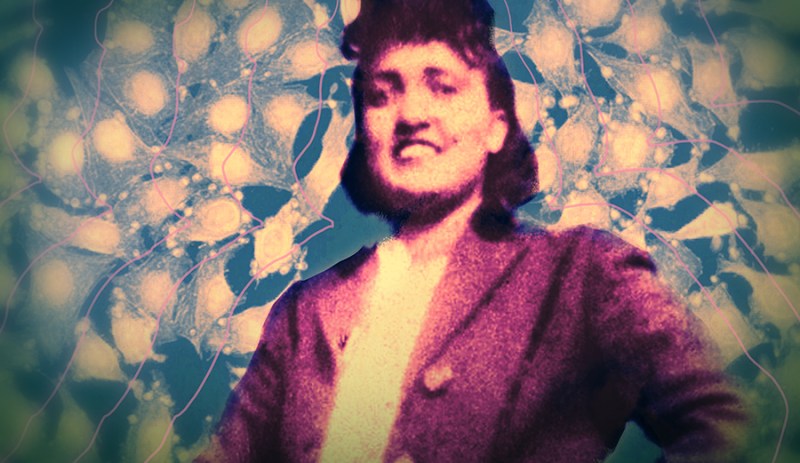














I recall hearing/reading? about the contaminated cancer cell lines a few years ago and the trouble a researcher (a cell line manufacturer?) had convincing those that had used contaminated cell lines (including his own research) that the results were flawed. It meant “scrapping” a lot of prior and ongoing research to get a clean restart.
My comment was not to detract from the Henrietta Lacks story in any way.
Ren you’re absolutely right. Stanley Gartler was ignored for years because researchers didn’t want to abandon years of work (and millions of dollars in grants).
That’s the case with many Almighty Dollar for Dullards
An episode of “Law and Order” (5/17/2010) had a plot dealing with the same subject involving a Black male named Nathan Robinson (NaRo). It was just rebroadcast last night and I noticed that the name of the company using NaRo was Hemo Labs (HeLa).
“Yet the procedure performed on Henrietta would still be legal. When a piece of your body is cut away during a medical procedure, it is considered the property of the doctor and medical institution.”
That should bother a lot of people, but then when was anyone compensated for all the present day data collection and mining? People viewed as a resource has a long history.
While you where under, your insurance denied your claim…
So we removed a kidney to pay for the procedure.
Stop hating the Chinese. It will kill you at the end. Hate that is.
Hate leads to suffering.
http://www.yodaquotes.net/fear-is-the-path-to-the-dark-side-fear-leads-to-anger-anger-leads-to-hate-hate-leads-to-suffering/
Yeah, I want my foot back! It may have gangrene but it’s mine!
I would expect the option to keep anything taken from my body. Most of the time I’d let them incinerate it unless it was really interesting and fit inside a jar. But if somebody’s getting rich off something they found in me, they can spread the wealth a little bit. Same thing happens if you find oil on somebody’s property, or jewels, or whatever. Why does it apply to land and not people’s own flesh?
I didn’t compose my DNA personally, but it belongs to me more than it does anybody else. Bodily autonomy.
Actually I’ve got what’s left of a horrible old tooth I had extracted in the cupboard. They were only going to throw it away. And where else would I get a tooth from if I needed one? They’re not exactly easy to come by.
Dentists can sell extracted teeth to bio-research labs. I don’t suppose they’d buy off me personally, and it’s probably too dead now. There’s been cases where some dead guy had an entire leg bone removed and replaced with a bit of PVC pipe, the mortician sold the bone on. Selling bits of corpses to labs is a nice little earner for some morticians. Nice money, too. If morticians are allowed to profit from that, why can’t families? I’d leave myself for scrap if my beneficiaries got cash for it. Better than a potfull of ash on the mantelpiece.
And that’s without even mentioning the vampire market. Or zombies.
IMO an apples to oranges comparison. As long as google doesn’t associated my search activity to in a way that is not traceable to my identity I can’t care how they use that data. In fact I consider it a fair trade to void having to pay for search results and viewing content on YouTube, even if google gets a better part of the deal. However selling any of my body tissue without my explicate permission or compensation agreement is entirely a different matter.
The irony is Gey himself did not really profit from this. He was sent a tumor sample to study, and then after some success passed it to other that continued the effort. I see nothing “sinister” here. I had a tissue sample sent to a lab for diagnosis. If some of that was used to advance medical science, good for them (as long as it was not used to clone a race of superior “super soldier” bent on dominating the human race, that is). The abuses noted were irrelevant to the HeLa samples, as those prone to unethical behavior will be unethical.
Sadly everyone thinks they are entitled to everything today.
The millions of lives saved out weight the grievance of a family that think they should be millionaires because of their ancestor.
I agree she deserves credit because it was her DNA used, but beyond that, the family should be grateful they can benefit from the advances in medicine should they contract a similar strain of cancer due to their DNA being from the same blood line…
Good read Adam, i learned something.
I was expecting “Chester Southam was sent to prison for the rest of his life”. If it’d been Nazis doing the same thing, it’d be taught in schools today as an example of their insane evil. Medical probation!?!? How many of his victims died? “Let’s just inject an incredibly virulent cancer into people and see what happens” ?
Me too – I was wondering how that guy avoided getting sent to prison for murder.
it was for the “higher good” … and there was no internet so it was just internal matter … or something like that … there was enough written about many other cases where patients were used as lab animals …. look at britain …. government testing and reasearch programs, no info no consent no compensation no choice no say … and those same people talking about the few victims of mengele
justice follows the grave.
The U.S. and World has issues with not disclosing bio-terrorism assaults (18 USC 113).
Just look at the sentences for the one case in Oregon and in fact poisoning does constitute meeting the definition of the USC for Murder (18 USC 1111). https://fsi.stanford.edu/sites/default/files/Kosal_2004.pdf
Seems recreational poaching is the status quo; as pan troglodyte cute, sweet and innocent, or whatever criminal act that needs to be death sentenced, isn’t executed publicly anymore.
I think Utah, Oklahoma (firing squad option) and maybe some jurisdictions that claim an imminent threat (10 CFR 1047.7, et.al.) can lethal force prosecute ethically though not as legally as required to offset the MCL 750.200h&i, MCL 750.224a and MCL 750.543p operations that go on to manufacture terrorist (21 USC 2331) attorney rackets (18 USC 96) continuing criminal enterprises (21 USC 848) operations, operators and victims which include health care, law enforcement and retail outlets or whomever playcates on acting like they’re those roles.
China, the Middle East and a few other countries I think still executes perpetrators just for adulteration of food acts (21 USC 351).
With things like the fake eggs, and melamine in pet food, China needs to execute more of the fuckers. It’s apparently part of their culture to look up to people who “save money”, as long as they get away with it.
I have to admit while researching this article I was amazed at how little punishment Southam received.
Perhaps the fact it was 1950s and that she was a black woman would explain everything.
Like child labor/slavery in the UK in the 19xx?? Chimney sweepers, ship welders, street cleaners, etc etc
Not condoning in any way, just putting into context.
Otherwise we (society) will never learn and go forward.
Lufo – We’re referring to the research performed by Chester Southam. He was injecting many patients of different races with HeLa.
It’s mostly historical point of view, look at small pox vaccine: Jenner injected pus from cow infected by cowpox into a healthy child arm, then variole virus to test, should be sentenced to death and his work tossed in the bin?
Same for Louis Pasteur but on people having bitten by rabid animal (so living dead).
Yes but Jenner was aiming to make his test-subjects healthier, immune to the biggest killer of the time. I don’t imagine Southam thought he was doing his subjects any favours. Jenner was working from a theory, planning a vaccine that would save countless millions of lives. Southam certainly wasn’t!
Jenner wanted to help his patients, Southam used his as victims, deliberately injuring them, perhaps killing them (I don’t know how many he may have killed), just for scientific curiosity. He’s the sort of scientist-psychopath that horror stories are written about.
Most importantly, Jenner’s subjects were told what he was doing, and consented.
Informed consent is the key when not under distress or duress or potentially tortured into complying.
Which is why the families of those who died of suffered should have been compensated and this monster sentenced to life. But the lenient probation period, would imply those above him had knowledge and probably gave the go ahead as long as it would never come back on them in the future (his slap on wrist evident that no one else would ever be implicated in this)
True, probably. Somebody had to pay him to commit all that lunacy, mad scientists have to eat. If he didn’t produce reports, he wouldn’t have been paid.
My biomedical ethics course taught us that in the U.S. and I’d guess Western World; the M.D. researchers are the most fraudulent of all the researchers. My experience first hand finds the attorney’s and I’d guess the investigators and those performing examinations and depositions are a close most if not the next to most.
The USA has a long track record of unethical human experiments, many of them rivaling the horrors of Nazis
https://en.wikipedia.org/wiki/Unethical_human_experimentation_in_the_United_States
If you read history, you would know that the Nazi scientists were offered immunity for their crimes in ww2 by the west and Russia, in return they were allowed to continue their research in the west and Russia, why do you think a lot of technology after the period were uncannily similar, more than one scientist would have worked on a project in Germany, if the west got a few from one project and Russia got a few from same project, they would both be able to develop that technology at a similar rate, along the same idea lines etc.
Don’t forget about Sintiro Tomonaga, Antonio Longoria, Otozo Yamada and Dr Shiro Ishii.
There are real tragedies here — the inhumane experiments done on people and the poverty of the Lacks famiy (discussed extensively in the book). But not the use of the cell line itself. I strongly believe that Lacks’ tissue is simply discarded material.
Claiming that she was unfairly treated by it being used for research after her death, or that her family “deserve” compensation is part of the absurd culture that has lead to the continued extension of copyright and the belief that “someone should be paid”.
Did you know that in the US if you use donated human tissue for teaching you have to pack it all up and give it back to the family? This is absurd fetishism.
When I pop my clogs I wil have no use for my body nor any of my other posessions and it’s absurd to pretend otherwise. The law recognizes that you can’t slander a dead person — why does it make these other exceptions?
yah nah her family should be filthy rich imo.
It’s a flat-out bandit economy now. Rich people get into power. They use power to enrich themselves, and their friends. Corruption is endemic.
But hey if we weren’t so lazy and worked hard, we ALL could be wealthy beyond or needs.
[sarcasm]
Dave, I agree — inheritance should be a crime, at least to those of us who live in republics. If you live in an aristocratic monarchy then I guess it’s the law of the land. But people should be ashamed to receive an inheritance.
I’m pretty sure the copyright thing is disney’s fault, not henrietta’s
I get the danger of pink goo vs grey goo, but HAD has already done bits on firearms and the information is out there.
How about more DIY-able bio articles.
It is a field I have minimal background, but even more DIY testing and experimentation without for example direct cell hacking would help us avoid the Arduino Schwarzschild radius.
I wonder if a biologist with enough versatility to cover the field could be brought into the staff for a test run.
Arduino Schwarzschild radius? is the thing going to implode into a black hole? wtf are you talking about?
THAT was a good writeup! Thank you.
So, science has discovered an Immortal cell line,can scientists use Hennreate’s immortal cell line, to achieve physical immortality within the next 25 years?
Well, that is the research mentioned in the article about telomeres…
We would want our telomeres or optimal age say range with juvenile enzyme ratios or inhibitors to the bad enzymes and proteins like say hemoglobin for better oxygen capacity.
We don’t want the tumors or cancers or to be one. Preferably the genetic age range with proper hind sight and sex appeal. I’d like more hair on my head and not on my body.
Cancer cells tend to be a lot less mortal then the patient… the problem is finding the correct balance to keep the “immortality vaccine” from killing you, so far very little progress has been made in this field despite very intensive research.
Yes, but you’d live on as a tumour.
I found the idea that what are essentially still human cells – despite a disturbing level of mutation – are a problem at such a level, able to become airborne and contaminate cultures even in carefully controlled environments.
That, in combination with the experiments infecting humans with HeLa cells, makes me wonder how dangerous those cells are to merely be in the presence of. Can inhalation or accidental introduction of HeLa cells to mucous membranes cause cancerous growth in a healthy person? In those with compromised immune systems? Could a weird enough cancer infect another human naturally – like a lung cancer getting cells coughed out or something? Freaky.
Well, pancreatic cancer is caused by a virus, I know of 2 maybe 3 couples who died within a couple years of their spouse’s death also of pancreatic cancer.
Respectfully, you might want to look up “Type 1 statistical error” on Wikipedia. You can’t conclude that there is a relationship there because of 2 or 3 anectdotes.
Why to place the blame on a virus, when environmental and other factors, could also could be the cause?
The problem is your body would recognize it as an invader, and destroy it.
A reason why cancer is hard for the body to fight, is because it’s still you. To your immune system cancer doesn’t look out of place.
I would definitely not call this a problem, but rather a very welcome benefit :P
The patients injected with HeLa were injected with millions (or billions) of cells. Those with healthy immune systems still rejected the cancer. A few cells that might be inhaled would absolutely be destroyed by a healthy person’s immune system if they managed to enter the bloodstream.
HeLa mutating and absorbing the entire biosphere of Earth, then metastasizing to spread to other planets in the solar system, and eventually on to other solar systems.
So you’re saying that perhaps humanity is actually cancer.
I think they’re saying that cancer is actually cancer. It’s hard to argue against that one.
Can’t answer that per se, but scientists have discovered several transmissible cancers already making the rounds. The Tasmanian devil thing (https://www.tcg.vet.cam.ac.uk/about/DFTD) is probably the most well-known, but at least one has been found circulating among dogs too.
Considering J Hopkins unethical black lung work, is anyone surprised? As to medical malpractice, Dr John Napoleon of NJ might be worth a google as well. (If the character references dont scare you, I’m frightened)
And of course Tuskegee was mentioned in the article, but not for the reason it’s infamous.
But there’s plenty, plenty, plenty, of cases where horrible deadly medical experiments were done to unknowing people, or even people who were lied to.
Is the HeLa cells contaminate other cells so easily. Can they be used to cause cancer?
You know there’s canine transmissible venereal cancer? A tumour that originated on a dog, now long dead, that passes from dog to dog. The tumour spreads like a disease or a parasite. It’s a tumour that can live on pretty much any dog, a transmissible cancer. It spreads through physical contact.
According to Chester McNutjob’s work, you can certainly inject HeLa tumours into people (as long as you don’t tell them first). I dunno how you’d prove that anyone accidentally caught HeLa, I suppose you’d have to study cancer sufferers who worked in cell labs, see if any of HeLa’s DNA ends up detectable in their tumours. It’s probably a bit of a rare disease. And of course there’s enough trouble working with poor Henrietta’s remains as it is. Last thing the medical research industry needs is them classifying as bioweapons or something.
Devil facial tumor disease currently affecting Tasmanian devils is a transmissible cancer, spread by bites and wounds. The origin is likely a canine. Lots of work has been done to try to understand why the devil’s immune system doesn’t fight it off. There’s been some recent success with a vaccine/treatment, too.
That’s exactly what Chester Southam was testing (on unsuspecting patients). The answer is no, not in humans with normal immune systems.
warts are not cancer (yet…), just infected tissue. But they can become cancer.
AKA the A: First off, some background definition of cancer in simple terms is a “disease caused by an uncontrolled division of abnormal cells in a part of the body. ”
There is a moment and range in time where cancer did occur to have a “wart” growth. Granted, if the immune system identified the uncontrolled division and halted the division from invasion… then the “wart” growth turned benign.
Technically, if there wasn’t an adaptation/integration, the body can reject the uncontrolled division and reject and eject the tissue like with say a wound, allergic response skin condition and other infections.
When the body integrates the tissue even if encapsulated then there is something more that is cancer, albeit benign or malignant.
My first B.S. was in Chemistry and A.C.S. certified Biochemistry with my undergraduate research in organic synthesis with a personal addiction to medicinal chemistry originally wanting to study to be a chemical engineer and then N.D. and M.D./D.O. Then I realized how challenging holistic medicine can be to find work and how the community responded to my interests and concerns during that political season.
Some very early foundations of our understanding that cancer could be caused by a virus came as the result of “the bubble boy” getting a bone marrow transplant that contained a virus. According to my remembrance, he ended up dying from cancer really fast, from Epstein-Barr that lay dormant in his sister’s marrow.
http://www.takepart.com/article/2015/12/07/bubble-boy/
I recall reading that many breast cancers can be shown to contain similar viral DNA but I’d have to do research to find it.
Turns out that Epstein-Barr dna has been found more often in breast tumors than in nonmalignant tissue, too.
Makes sense, really. We know that random DNA damage from, eg, radiation, causes cancer. So if whichever individual virus, with it’s own uniquely mutated DNA, adds it’s contribution to a cell, some of the time that disruption is going to turn the cell cancerous too. Makes sense that it’d show up statistically.
A successful virus can’t kill you instantly, but it only needs to keep you alive long enough for it to spread.
HeLa is particularly interesting in that a virus seems to be playing a part in keeping the human host cell alive. Modern genetic engineering often uses modified viruses, some common virus that isn’t deadly to the host, with a payload of the desired genes added to it. The full de facto genome of most things must be a lot more complicated than the simple set of chromosomes you get from your species.
Let us not forget immunocomprimization from EMF in certain ranges or intensities of the EMS: https://drive.google.com/file/d/0B3kLL6AnKjj5eVgyMnVhbjNGMEU/view
Scary stuff. But only tip of the iceberg: https://en.m.wikipedia.org/wiki/Unethical_human_experimentation_in_the_United_States
I expect this kind of comment on Facebook, but maybe I should start expecting it here too. I hope for your sake you’re just drunk and have the option of sleeping this stupidity off.
Excellent Adam Curtis doco about this on the You Tube.
https://youtu.be/C0lMrp_ySg8
The thought that her family should be somehow compensated, as mentioned in previous comments, is such backward thinking. Wheres the compensation when someone donates their organs after they die? Yes, its completely horrible that samples were taken without consent and blah blah blah, but this story right here is why doctors should Continue to do these ‘underhanded’ things. How many lives were saved because she wasnt given the option of keeping her sickness private? Its the same with all this HIPAA shit today. I can totally see how anyone would prefer their medical history left private, but how much good could be done if that information was collected, analyzed, and used for the betterment of medicine? HIPAA should not be keeping medical data private, it should be keeping it anonymous and openly available.
Her cells are “immortal” in that they are not senescent, they reproduce forever. Same way lobsters might be immortal. You can still kill them with fire, or bleach.
Are you sure that cancer rates have gone up since HeLa cells were airmailed? This might not really be the right site for you.
Amazes me like other issues I’ve exposed in the past… that HPV causing cancer was so obvious and compounded and concealed prior to me complaining up at Tech where eventually the vaccines (probably can be better as immunizations technically) came to the market.
Like bio-equivalent or donor optimal cells or molecular biological products, diagnostics and therapy; phage therapy, isn’t on our market still. Issue.
There is a huge axis of roman catholic ecclesiastical province descent, military industrial pharmaceutical petrochemical molesting everything they can to death, complex issue going on that is no way real Christian (pro-life, pro-truth).
Unethical experiments of a biological nature were conducted by governments as well as individuals.
Try these for size, and bear in mind, these are just a few of the experiments that have come to light. Others were no doubt sufficiently “secret” that they were never made public.
http://www.dailymail.co.uk/news/article-3154555/How-British-government-carried-secret-biological-warfare-tests-London-Tube-passengers-1960s-Cold-War.html
https://en.wikipedia.org/wiki/Gruinard_Island
https://priceonomics.com/how-the-us-government-tested-biological-warfare-on/.
“The treatment at the time was to irradiate the tumor with radium tubes placed in and around the cervix.”
It is written as if it is not used anymore. It`s a bunch more isotopes than just radium now, but the principle is still the same.
https://en.wikipedia.org/wiki/Brachytherapy
Warning! Some of the google images are pretty graphic.
This article needs attribution throughout, rather than lamely naming two “references” at the end.